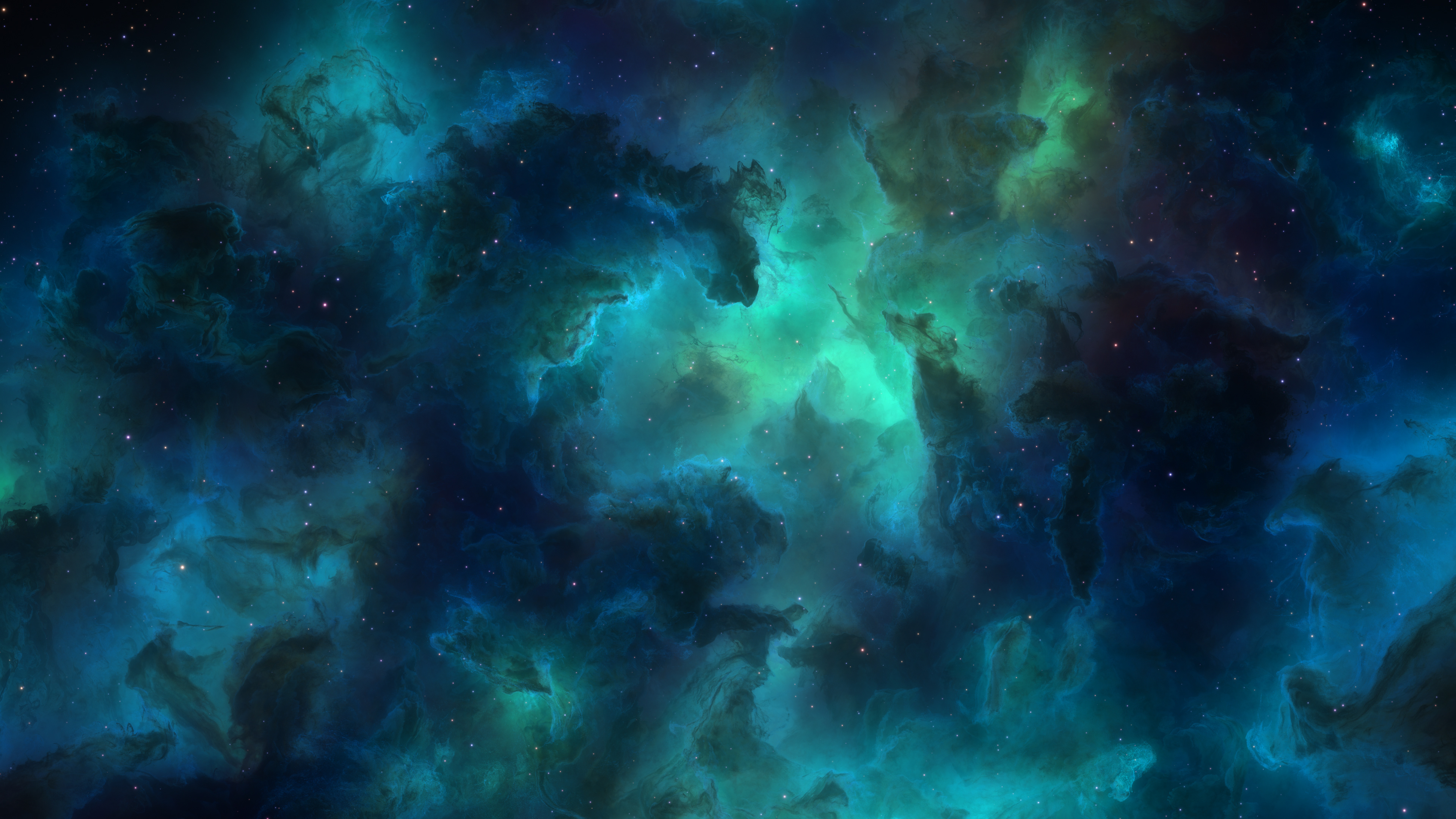The evolutionary play of quarks and electrons resulted in nuclei and atoms. The computational outburst of atoms resulted into molecules and star systems. The intricate relationships between molecules created the fascinating entities of DNA, proteins and membranes. The interplay of which created the many species of cells, which through an inherent need to reduce their entropy and ensure their propagation would congregate into organs and advanced interacting organisms. These organisms would grow interfaces that would mirror their predecessors, and in a game of survival of the fittest would evolve complex processing capabilities creating virtual worlds, artifacts and cultural codes.
The Flow visually reimagines physical processes that we are unable to directly observe with any imaginable medium, while referring to modern
physical theories and scientific visualisation processes. It alludes to ideas of digital physics, complexity and information theories as well as the
concepts of universal Darwinism, emergence and supervenience.
physical theories and scientific visualisation processes. It alludes to ideas of digital physics, complexity and information theories as well as the
concepts of universal Darwinism, emergence and supervenience.
More information on the Flow website
The Layers
Information. Continuously being transmitted and received, always in formation. It radiates out of itself and interacts with itself like ripples of water. With each interaction, a unique combination of information is expressed, a code that is processed by another code, increasing in complexity. An algorithm that expresses itself in increasingly complex calculations. This is the flow of information.


M-branes to Quarks
In M theory, encoded physical information is thought to be released from multi-dimensional entities, called M-branes, and is expressed in the different properties of elementary particles. These qualities determine how particles interact with each other, resulting in the fundamental interactions that give rise to the universe.



Quarks to Hadrons
Quarks are coded to interact with each other by continuously exchanging a threefold force which binds them together. The force is expressed in a myriad of virtual quarks and gluons that act as carriers of information from one quark to the other. This force is so relentless that quarks are never found in isolation but always in groups.

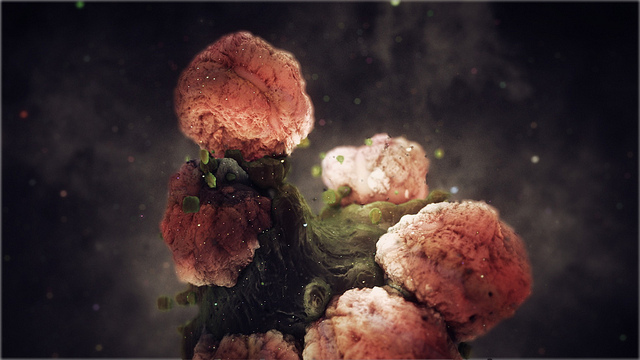
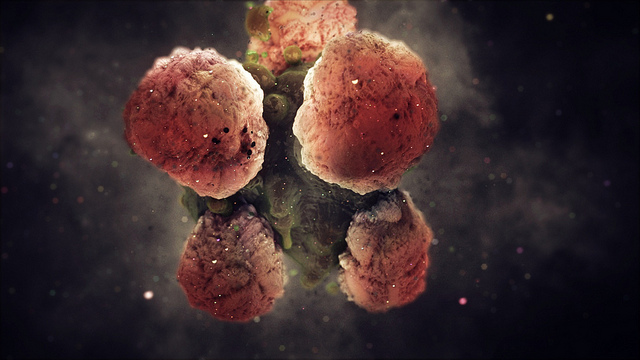
Hadrons to Nucleus
Groups of quarks hold more complex information that encode another level of entities, such as protons and neutrons. These entities are held together by the residual force released from their constituent quarks, exchanging information by releasing pairs of quarks. The sub-system of quarks that arises from the interaction of these entities creates yet another layer of code, the nucleus.


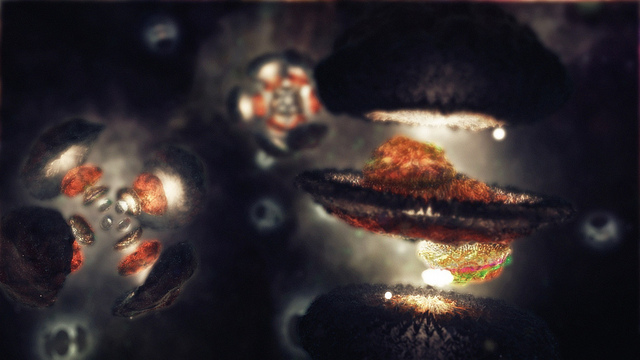
Atoms to Molecules
The nuclear complex is able to interact with different information entities like electrons, forming new groups of codes. Electrons occupy the space around the nucleus within clouds of probability known as atomic orbitals. Together with the nuclear system they create a new class of entities coded by the varying amounts of nucleons and electrons interacting with each other. This diverse interaction of nucleons and electrons creates the different types of atoms or elements.

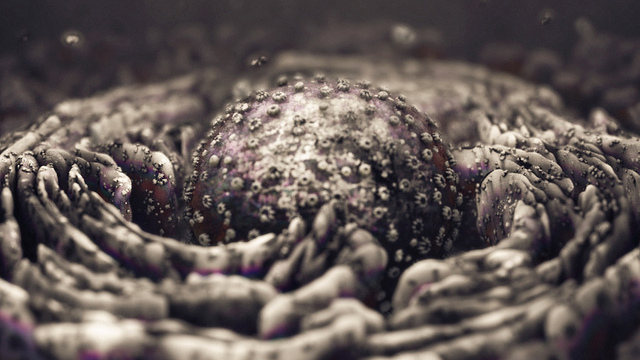

Biomolecules to Organelles
Elements eventually create compound structures, which through complex interactions give rise to organic macromolecules that can wind themselves up in long strings and walls of code, like RNA and membranes. These codes build massive structures, the organelles that reside within the cell, each communicating with each other, working together to build even more complex 3D information like proteins and hormones.
Layer upon layer the flow builds new codes that create new codes, each version computing a new state based on the previous one. Information becomes a single continuum of reinterpreted data projecting from a simpler state out to a more complex one. It appears like an endless seamless pattern with no beginning or end flowing out of and into eternity, a crystalline fractal, a message that forever reiterates itself.
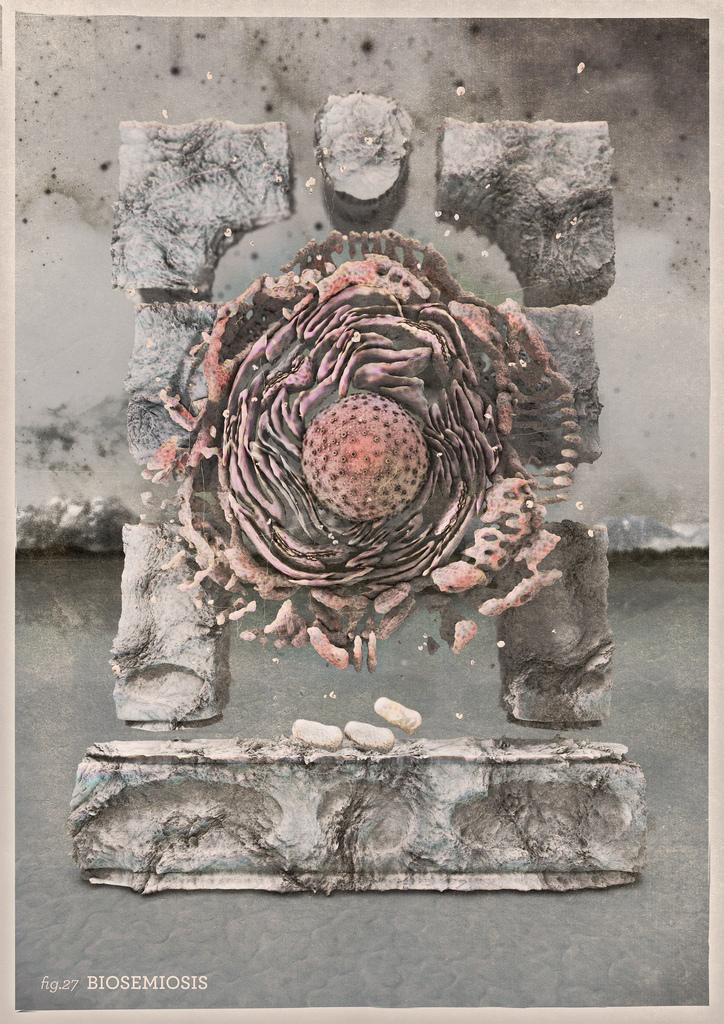
Biosemiotics is a growing field that studies the production, action and interpretation of signs in the biological realm. Biosemiotics attempts to integrate the findings of scientific biology and semiotics, representing a paradigmatic shift in the occidental scientific view of life, demonstrating that semiosis (sign process, including meaning and interpretation) is its immanent and intrinsic feature.
source: en.wikipedia.org/wiki/Biosemiotics
source: en.wikipedia.org/wiki/Biosemiotics

The major organelles of a eukaryotic cell: the nucleus that is involved in DNA maintainance and RNA transcription, the rough endoplasmic reticulum that is involved in the translation and folding of proteins, the smooth endoplasmic reticulum that plays a role in the expression of lipids and the energy producing mitochondria. en.wikipedia.org/wiki/Organelle

The outward expression of data (genes) in the central cell structures. Starting from the data code (DNA) in the central processing unit (nucleus) through the output switches (nuclear pores) carried by data transporters (mRNA) to the data translation points (ribosomes) where it is translated into complex molecular data (proteins) and then modified in compact meaningful states (folding) in the data optimisation sites (RER) until finally released by distribution sites (SER) and carried via data transporters (vacuoles).

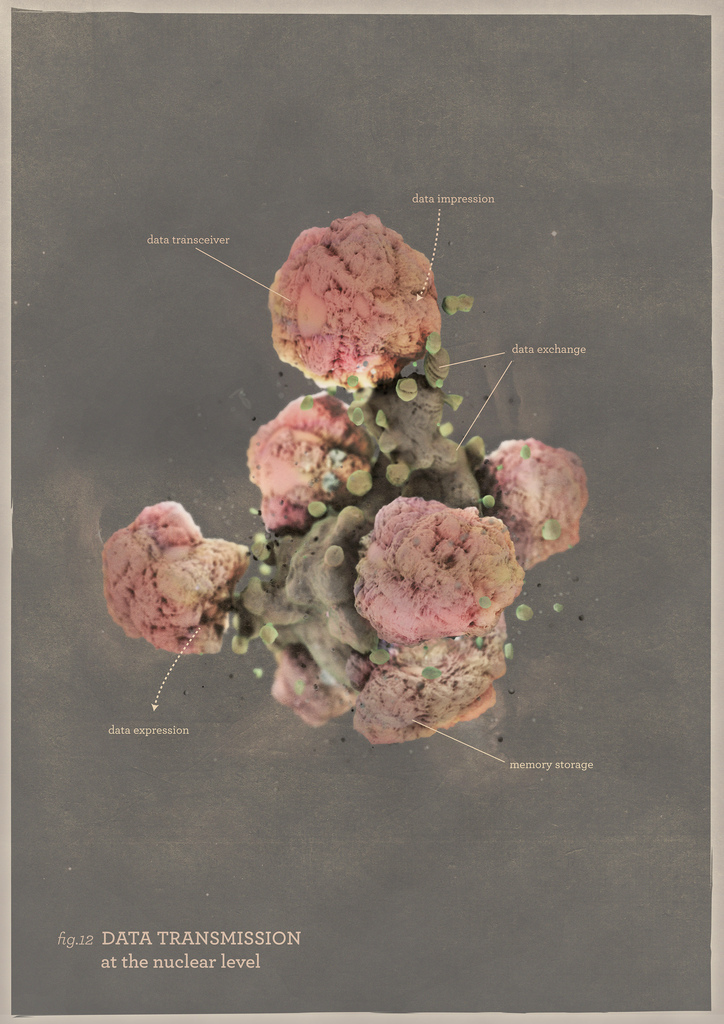
Data is stored within each nucleon in the form of 3 quarks, whose combination determines whether the nucleon will have a 0 or 1 value (neutrons and protons). Data is exchanged between the nucleons through quark pairs (mesons) and virtual particles holding the nucleons together. This is essentially the same data exchange that occurs between valence quarks (residual strong force.) Data is expressed in the form of electromagnetism from the positively charged protons that act as data transceivers attracting complementary value entities (electrons) and repulsing same value entities.
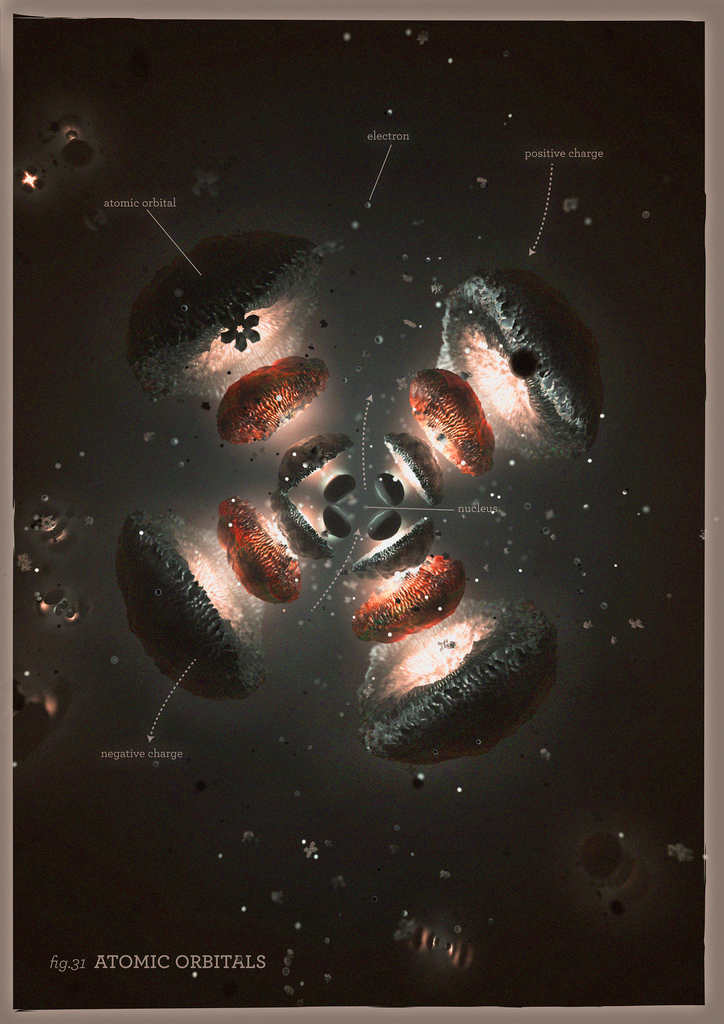

The nucleus acts as a permanent storage site of quark triplets (baryons, ie. protons and neutrons) which make up the electromagnetic signature of the nucleus. This code holds together another layer of code around it made out of electrons (atomic orbitals) whose form depends on the structure of the nuclear code. This results in the various chemical elements, each with its own intricate electromagnetic signature which enables them to interact in increasingly complex ways creating compound molecules.


Data is stored in the form of nucleic acids (DNA) within the nucleus while data converters (ribosomes) are produced in the nucleolus. DNA data is transcribed by enzymes and released in the form of tRNA a special kind of code that can be transported to other parts of the cell where it is transformed into more complicated codes like proteins. The release of RNA is controlled by the input-output switches (pores) that cover the nuclear envelope, these also control the incoming data from the cell that feedback information back to the DNA, creating a continuous complex machinery of data transmission and reception. The Central Processing Unit (the nucleus) in effect acts as a beacon of information within the cell.


